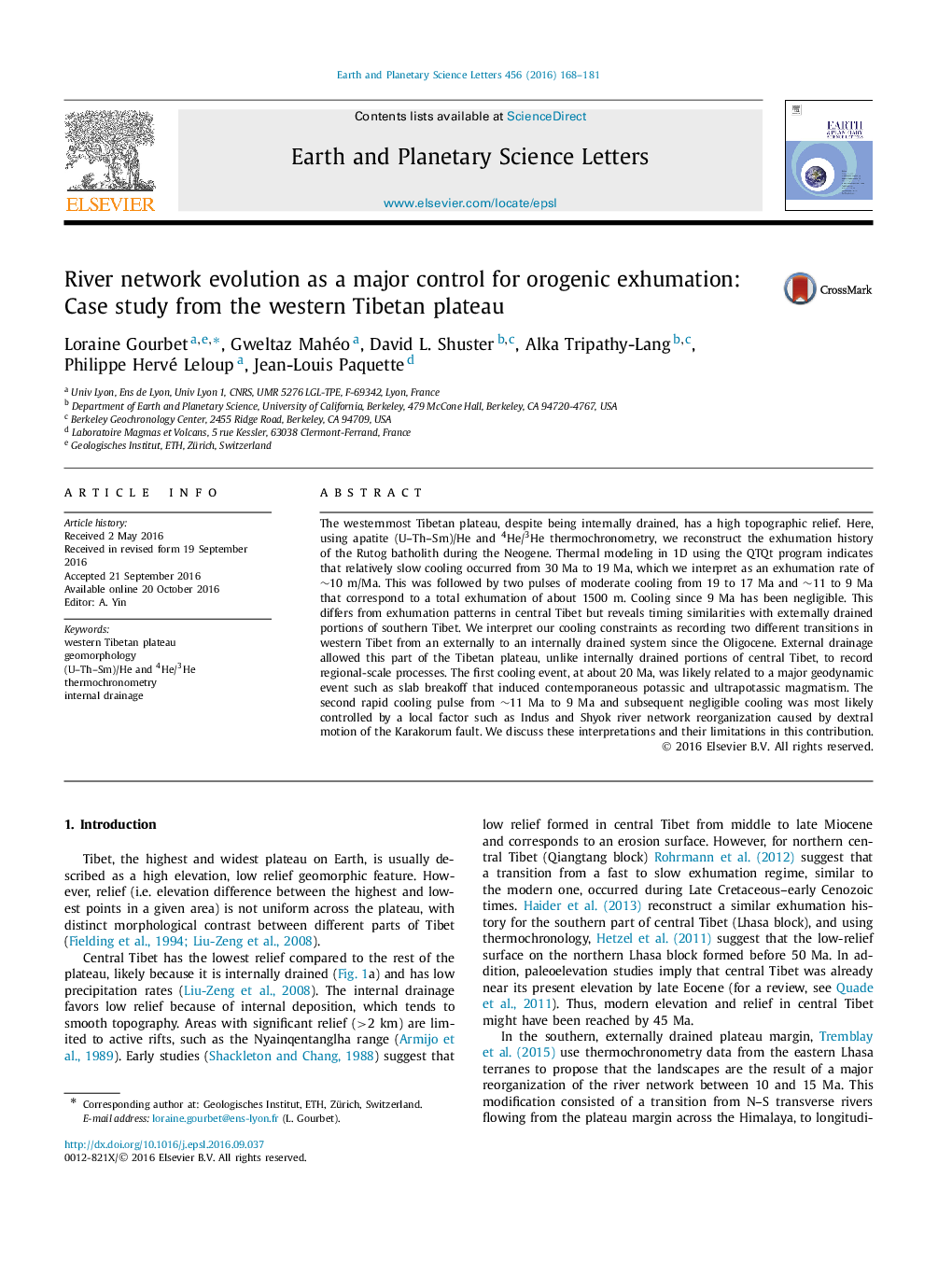| Article ID | Journal | Published Year | Pages | File Type |
|---|---|---|---|---|
| 6427084 | Earth and Planetary Science Letters | 2016 | 14 Pages |
â¢The western Tibetan plateau has a high topographic relief.â¢Western Tibet experienced two pulses of moderate exhumation during the Miocene.â¢Exhumation since 9 Ma has been negligible.â¢Exhumation history is partly related to drainage network reorganization.
The westernmost Tibetan plateau, despite being internally drained, has a high topographic relief. Here, using apatite (U-Th-Sm)/He and 4He/3He thermochronometry, we reconstruct the exhumation history of the Rutog batholith during the Neogene. Thermal modeling in 1D using the QTQt program indicates that relatively slow cooling occurred from 30 Ma to 19 Ma, which we interpret as an exhumation rate of â¼10 m/Ma. This was followed by two pulses of moderate cooling from 19 to 17 Ma and â¼11 to 9 Ma that correspond to a total exhumation of about 1500 m. Cooling since 9 Ma has been negligible. This differs from exhumation patterns in central Tibet but reveals timing similarities with externally drained portions of southern Tibet. We interpret our cooling constraints as recording two different transitions in western Tibet from an externally to an internally drained system since the Oligocene. External drainage allowed this part of the Tibetan plateau, unlike internally drained portions of central Tibet, to record regional-scale processes. The first cooling event, at about 20 Ma, was likely related to a major geodynamic event such as slab breakoff that induced contemporaneous potassic and ultrapotassic magmatism. The second rapid cooling pulse from â¼11 Ma to 9 Ma and subsequent negligible cooling was most likely controlled by a local factor such as Indus and Shyok river network reorganization caused by dextral motion of the Karakorum fault. We discuss these interpretations and their limitations in this contribution.
